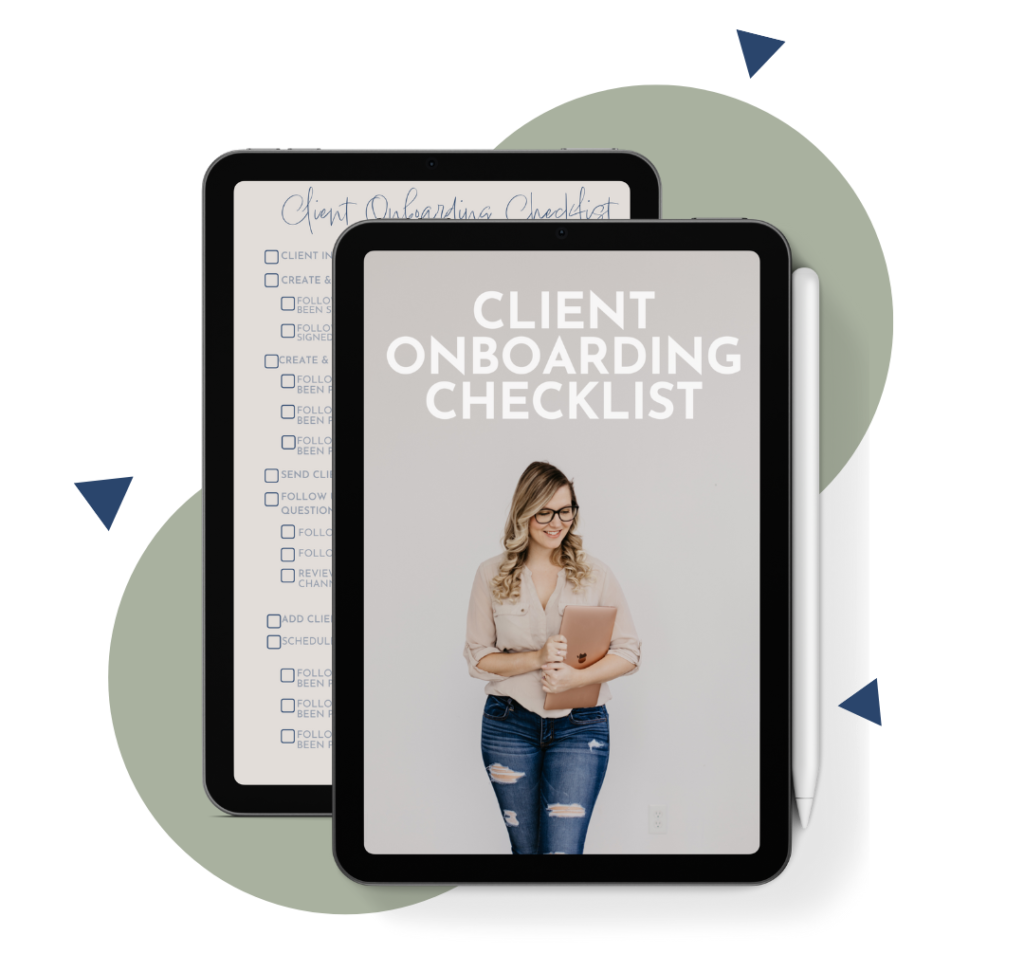
Discovery Call Breakdown for More Sales
As a service provider, I love using discovery calls to screen and connect with potential clients.
They’re my lifeline to the minds of the people I work with, and I love using that time to ask questions and get on the same wavelength.
It has, over the years, become one of my favorite things to do. Getting to know people and hearing their business stories is incredible and I’ve become quite good at the sales side of things.
I wasn’t always good at it, though.
It took more than a few mistakes to find the magic formula- and when I finally did, I never let it go.
Now, I’m here to share this magic formula that will create the discovery call of your dreams and help you sign more clients.
What is a Discovery Call?
A discovery call is a scheduled event where you talk with your potential client either on a Zoom call (preferred) or on the phone. If you’re a coach or service provider, this is a valuable time to get a feel for your clients and ask them questions. It’s also a time for your client to ask questions, get a feel for your experience, and learn if you can meet their needs.
Sales don’t have to happen with every call, but they can help. However, if you’re trying to sell a high-ticket package (say $1k or more), you may want to use the discovery call to your benefit.
Overall, it’s up to you (and the situation) to decide if you want to make a sale during the discovery call or wait until the timing is better aligned.
The Breakdown
Without further ado, here is the ultimate discovery call breakdown. Use it well!
5-10 minutes: Greetings and Pleasantries
As soon as you answer the phone, greet them and re-introduce yourself. Then, begin with the pleasantries.
Ask them questions related to your niche- finances if you’re a finance coach, business goals if you’re a business coach, personal life if you’re a mindset coach, etc.
That way, you can get to know them while paving the way for a working relationship.
10-15 minutes: How Can I Help You?
After the pleasantries, start asking the pointed questions. What services are they interested in? Why did they seek you out (or businesses like you)? What do they hope to gain by working with you? What are their long-term goals? And finally, what do they expect you to do?
It’s best to have a list of the questions you want to ask- that way, you’re more organized and prepared to gather as much information as possible.
10 minutes: How I Can Help You
Once you’ve asked your questions and gathered as much info as you need, it’s time to reverse the roles.
Explain the services you offer, what they’re for, how they work, and what you’ve done in the past. Offer solutions, past testimonies, work experience, and any other relevant information.
It’s your chance to show your potential clients how well you listen to their problems, how you propose to fix them, and if you have the skills to do it promptly.
5 minutes: How Are We Feeling?
Pause here and do a temperature check. Are your potential clients ready to commit to the sale, or do they have more questions?
If they keep balking at this point, it may be an issue with the first part of the call. Practice and hone those skills until you’re as clear and concise as possible- then, more people will want to move on to the next step.
5-10 minutes: Prices and Packages
The next step is giving your potential client a clear pathway to becoming an actual client. Outline the packages, what they include, the prices, and how they can purchase them.
If you think one would meet their needs better than the others, suggest it. Otherwise, be friendly but impartial- letting the client choose for themselves.
5-10 minutes: Open the Floor
Once you’ve gotten through the nitty-gritty details, open the floor. Ask if they have any last-minute questions, then summarize the call and outline what they should expect once the call is over.
Remember- Practice Makes Perfect!
Now that you have the breakdown, it’s time to put it into effect. Practice the call, giving yourself an hour to perfect the various sections and craft your replies. You could eventually shave it down to 30 minutes, but practicing for an hour never hurts.
Also, give yourself at least 15 minutes of padding at the beginning and end, and try not to schedule anything important around your discovery calls. That way, you don’t have to rush into the next appointment if you accidentally go over time.
Don’t Forget to Follow Up
Finally, remember to send your follow-up no longer than an hour after the call ends. Use it to summarize the call, remind clients what to expect, and thank them for choosing your business.
By using these tips (and providing a stellar follow-up), you can turn your ordinary discovery calls into streamlined works of art.
And then, they’ll be the game-changer your business needs to succeed.
Pin This Post

Meet Bai-Leigh
OBM & Systems Strategist
It’s time to strategize, scale, and skyrocket with systems. I’ve made it my mission to help simplify and streamline online businesses using the best systems and processes for you, the business owner.
I have helped over 100+ businesses scale their business using efficient and repeatable systems so that they can continue with their zone of genius while I take care of the rest.
From processes, systems, efficiencies, and automations – I do it all. If you’re looking for a strategic partner then you’ve come to the right place.
Interested in getting started? You can book a FREE Discovery Call below!

Client Onboarding Checklist
Provide your client with an automated and seamless experience – every time with this Client Onboarding checklist.
It covers all of the basic parts of onboarding and a few pieces to make onboarding stand out.
If you want to have clients buzzing about your onboarding you need this checklist.
Recent Posts
Related Posts

Breaking Common Myths About Your Processes
Time to bust common myths about your processes so you can separate the facts from the fiction and whip your business into shape.

How to Create Your Own Onboarding Process
There are a hundred ways to onboard a client, but they won’t all work for your business.
So, here’s what I do.

How to Improve Your Follow-Up Process
A solid follow-up process is more than just a “thank you, here’s an incentive.” Here’s how to improve your process and keep your clients coming back for more!



![Spring is calling, and it’s time to give your business some TLC! 🌸🌷✨
Let’s kick off the season by sweeping through our subscriptions (bye, unused apps!), sprucing up our processes, decluttering that mountain of an email inbox, and getting our cloud storage as organized as a Marie Kondo dream. 📧🗂
And while we're at it, let's realign with our business goals to make sure we're on track to bloom.
Which of these spring cleaning tasks are you tackling first?
Drop a comment below!
Post inspo @savingmoneybish
----
[systems strategist, woman entrepreneur, processes and systems, business strategy, obm, business resources, business tips, entrepreneurship]
#businesssystems #systems #systemsspecialist #strategicmapping #obm #valleyvirtualoperations #businessefficiency #businessgrowth #entrepreneur #businessautomation #outsourcing #worksmarternotharder](https://valleyvirtualoperations.com/wp-content/plugins/instagram-feed/img/placeholder.png)
